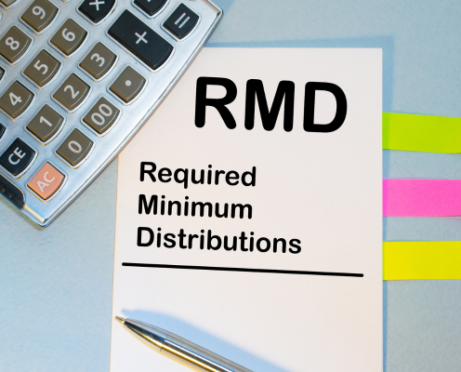
Cancer, a disease that spares no one, can be particularly challenging for high-net-worth individuals and their families. While the physical and emotional toll is undeniable, cancer's financial toll can be equally devastating.
But fear not, my friends. In this article, we're going to discuss some unique financial burdens faced by affluent individuals dealing with cancer and explore some savvy strategies to safeguard your wealth and well-being.
From understanding the true cost of treatment to considering disability insurance, we'll delve into how you can prepare for and navigate the complexities of a cancer diagnosis. Let's begin this crucial conversation so that you and your loved ones are ready to tackle life's unpredictable challenges!
For me, dealing with cancer is personal. I always considered cancer to be a disease that affects only the elderly. My great-grandmother passed from cancer, and as sad as it was, her death was not tragic. She had lived a full life and passed away surrounded by loved ones.
Then one day my world changed when four of my family members were diagnosed with cancer within a single year.
I witnessed my nephew going through cancer treatments and the accompanying financial hardship. Six months after my nephew passed away, his mother received her own cancer diagnosis.
During this time, my mother-in-law also felt the effects of this horrible disease. I spoke with her daily. She told me about all the time she missed from work as a result of costly chemotherapy appointments.
Costly Condition
I realized how important it was to protect not only your health but also your finances.
According to the National Cancer Institute, approximately 2.0 million people will be diagnosed with cancer in 2023 in the United States alone. There are 29 children diagnosed with cancer every day in the U.S. It’s a disease that affects individuals of all ages and walks of life.
Cancer's financial toll for treatment and other medical necessities isn’t cheap.
According to a report by the National Cancer Institute, the average cost of cancer treatment can range from $10,000 to over $100,000, depending on the type and stage of cancer.
Over 66 percent of bankruptcies were linked to medical bills, according to a 2018 study published in the American Journal of Public Health. This occurred despite a general increase in insured persons under the Affordable Care Act.
On average, Americans with colorectal cancer can expect to pay upward of $15,000 the first month they receive a diagnosis, according to research conducted by Milliman Research. Meanwhile, those with lung cancer can expect to pay nearly $25,000.
In recent years, hospices have emerged as an important option for end-of-life care, providing a comfortable and supportive environment for patients with terminal illnesses such as cancer. For affluent individuals in America, the cost of hospice care can vary significantly depending on factors such as the location, the type of hospice facility, and the specific services offered.
High-end hospice facilities, which cater to the unique needs and preferences of affluent patients, can be quite expensive. These facilities often offer private rooms, personalized care plans, and a range of specialized services such as alternative therapies, gourmet meal options, and advanced pain management techniques. The cost of these premium hospice centers can range anywhere from $500 to $1,000 per day or even more, depending on the level of care and the amenities provided.
It is important to note that many insurance plans, including Medicare, cover hospice care to a certain extent. However, this coverage may not extend to all services or amenities offered by luxury hospice centers, leaving affluent patients to bear some or all of the additional costs. To ensure a smooth transition to hospice care and to alleviate the financial burden, high-net-worth individuals should explore all available insurance options, consider long-term care policies, and discuss their preferences with their healthcare providers and financial advisors.
In conclusion, while the cost of hospice care for affluent individuals can be substantial, it provides a valuable service in ensuring that patients receive compassionate, high-quality care during their final days. By understanding cancer's financial toll and making informed decisions, affluent families can ensure that their loved ones receive the best possible end-of-life care, tailored to their unique needs and desires.
- Assessing Insurance Coverage: A financial advisor can help clients review their current health insurance policies to ensure they have adequate coverage for cancer treatments, including surgeries, chemotherapy, radiation, and other specialized therapies. This may involve evaluating the need for supplemental insurance, such as critical illness or cancer-specific policies.
- Planning for Out-of-Pocket Expenses: While insurance may cover a significant portion of cancer treatment costs, there may still be out-of-pocket expenses for high-net-worth clients to consider. Financial advisors can help clients budget for these expenses, such as copays, deductibles, travel costs, and alternative treatments not covered by insurance.
- Long-term Care Planning: Financial advisors can assist affluent clients in planning for potential long-term care needs during and after cancer treatment. This might include exploring long-term care insurance policies, setting aside funds for home healthcare or specialized care facilities, and planning for any necessary modifications to the client's living space.
- Estate and Legacy Planning: A cancer diagnosis may prompt clients to revisit their estate and legacy plans. Financial advisors can help clients with wealth transfer strategies, updating wills and trusts, tax-efficient giving, and ensuring that their wishes are carried out in the event of incapacity or death.
- Charitable Giving and Philanthropy: Affluent clients may wish to contribute to cancer research, support organizations, or establish their own charitable foundations. Financial advisors can guide clients on tax-efficient charitable giving strategies, such as donor-advised funds or establishing a private foundation.
- Business Succession Planning: If a client is a business owner, a cancer diagnosis may necessitate the need to create or update a business succession plan. Financial advisors can assist with strategies for transferring ownership, ensuring the continuity of the business, and minimizing the tax implications of the transition.
- Maintaining Investment Strategies: Financial advisors can help affluent clients manage their investment portfolios in light of a cancer diagnosis, potentially adjusting risk tolerance and investment objectives to account for changes in the client's financial situation, goals, and time horizon.
- Accessing Emergency Funds: A financial advisor can help clients evaluate their existing emergency funds or create a plan to build up a reserve to cover unexpected expenses related to cancer treatment, such as time off work or additional caregiving costs.
When Costs Add Up
As cancer treatments become more specialized, people have to travel further and further for care. My nephew’s mother drove an hour a day, three to four days a week, for his treatments. She and my brother also traveled five hours to New York City to consult with specialists in order to receive a bone marrow transplant exam.
My mother-in-law had to leave work several times throughout the week for doctor’s appointments, chemotherapy, and radiation.
In my great-grandmother’s case, she lived alone with no family close by. She often drove herself, but sometimes needed friends or family to assist her after difficult treatments or procedures.
Even for affluent families, managing cancer diagnosis expenses involves much more than covering out-of-pocket medical costs. Childcare and dependent-care costs, second opinion fees, and more can quickly add up. Even simple procedures like chemotherapy can cost more due to the higher deductible on affluent healthcare plans. Don't let medical expenses add stress to an already overwhelming diagnosis.
I know of a family that had to move an hour away from home. They left their children with relatives throughout the week and had the kids travel to their father’s hospital on weekends. Children might not be permitted to attend doctor’s appointments or be allowed in hospitals for overnight stays. As such, you might need to make additional arrangements.
What to Do About the Cost of Cancer Treatment
Prior to my personal experiences, I believed people could address these situations by having a large emergency fund in a savings account. That, or your family could take care of you. I always thought that you may not be able to prevent cancer, but you can prepare for cancer's financial toll through careful savings and a dedicated support network.
Although having an immediate emergency fund is not always possible, especially for those who belong to economically weaker groups, it is nevertheless crucial to have a plan to safeguard your finances in case of unforeseen events. This is particularly important for affluent readers like you, who may have more assets to lose. To secure your financial stability in the face of illnesses like cancer, consider getting disability insurance. It provides financial assistance & replaces your income when you are unable to work. Moreover, specified disease coverage, such as cancer policy, pays in a lump sum or as a defined benefit. So, don't let unexpected events destroy what you have worked so hard to build.

What Is Disability Insurance?
Disability insurance is designed so you can receive a percentage of your income while you are out of work due to illness or injury.
Short-term disability (STD) generally lasts less than one year, whereas long-term disability (LTD) can last for several years in order to accommodate more debilitating conditions that prevent you from returning to work. That said, both have elimination periods or time between incurring injury or illness and receiving benefits.
Individuals use both STD and LTD for a variety of conditions that prevent them from working, ranging from personal injury to illness to pregnancy.
Expecting mothers frequently use short-term disability benefits in the months leading up to their child’s birth.
“On average, short-term usually lasts three to six months, with long-term lasting for whatever term-length policy you purchase, up to age 67,” says insurance agent Andrew Stewart of AMS Resources Network. “Short-term disability basically exists to cover the elimination period for long-term, which is usually three to six months.”
Crunching the Numbers for Disability Insurance
Everyone, regardless of their employment, should sign up for disability insurance. To that end, we’ve broken down the key components of short-term disability and long-term disability so that you can understand what you’re paying into and what benefits you’ll receive:
- Your monthly premium is how much you pay into your insurance per month so that you can collect financial benefits at a later date.
- On average, both short- and long-term disability premiums will cost you no more than 3 percent of your annual income. In fact, it can be even less, depending on health factors.
- “A healthy 30-year-old working a typical office job can replace 60 percent of a yearly income of $60,000 with a $58 a month premium, which in this case is roughly 1 percent of their income,” Stewart says.
- Employers frequently offer STD for free, but you can take out a private plan if your employer doesn’t do so. More than half of mid-to-large-size employers offer LTD. You can also purchase it from a separate insurance agency.
- “Short-term disability cost is very variable, but it is usually vastly less expensive, in the range of $10 per month for basic coverage,” Stewart adds.
Preparing for the Cost of Cancer Treatment: The Bottom Line
As a high-net-worth individual, it's important to acknowledge that financial risk doesn't disappear on its own. Take proactive steps to protect your wealth and well-being. Consider building up a cash reserve or expanding an existing one. Evaluate both short-term and long-term disability insurance options. Review your insurance policy to ensure your provider adequately covers financial risks.
When my family members were diagnosed with cancer, I learned about treatment options and the costs involved. Unfortunately, many individuals lack the necessary protection if similar emergencies were to arise. If you aren't prepared to handle the expenses, ask yourself what steps you can take to acquire coverage or establish a safety net. Don't let a cancer diagnosis catch you off guard and potentially threaten your financial security.
(Additional reporting by Connor Beckett McInerney.)
This article's view is the author's and does not reflect the opinion of any member of CentSai's management. The author is not being paid by any financial services company nor has been paid to promote any individual product or service. The author is not a financial advisor or a broker-dealer. The content above is education-only and any reader is encouraged to seek advice from a registered financial advisor before taking any action.










